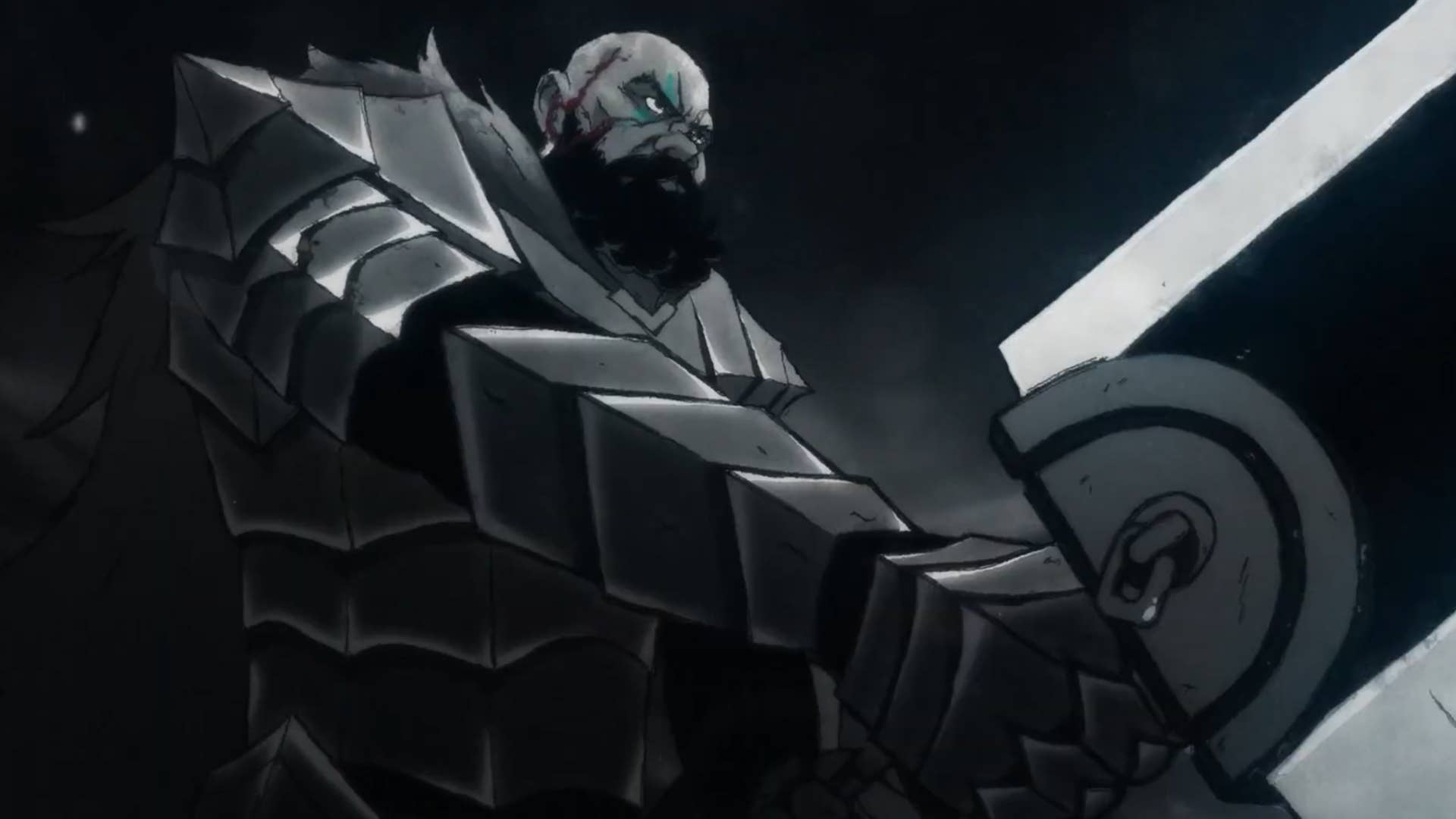Best Edgar Allen Poe Poems and Short Stories, Ranked
When it comes to gothic fiction, there is perhaps no more instantly recognized name than Edgar Allan Poe. He endured a lot during his short and tumultuous 40-year life and used his experiences to create dark tales and lyrical poetry that secured his place in literary history. Boston-born Poe has a host of “firsts” to his name, among which is the remarkable claim that he was the first well-known American author to have made his entire living solely from writing. He made early contributions to both the science fiction and detective fiction genres but is most well known for his macabre short stories and poems. Poe has quite an extensive bibliography. Most of his short stories and poems were published in periodicals and journals during his lifetime. If you’re new to the world of Poe, or just want to revisit the classics here are five of each to dive into. Best short stories by Edgar Allan Poe 5. Loss of Breath Image by Destructoid Originally published in the Edinburgh-based Blackwood Magazine, which was well known for its sensational tales, Loss of Breath was originally published under the pseudonym Littleton Barry in 1846. There’s something truly epic about this satirical short story of a man called Mr. Lackobreath who has, quite literally, lost his breath. During a quest to find his misplaced breath, he is repeatedly dismembered, assumed to be dead, buried alive, hanged, imprisoned, and otherwise abused in a variety of bizarre and exaggerated ways. 4. The Murders in the Rue Morgue Image by Destructoid Considered to be the first modern fictional detective, C. Auguste Dupin was the brainchild of Poe in a trilogy of stories. He first appears in The Murders in the Rue Morgue (1841), and then later in The Mystery of Marie Rogêt (1842), and The Purloined Letter (1844). Many elements of Poe's tale became conventions for later detectives, such as Sherlock Holmes and Hercule Poirot. The Murders in the Rue Morgue is a classic murder mystery tale, wherein Dupin investigates the bloody murders of two women that many overheard, though none can agree on what language was used. Dupin discovers a hair at one of the crime scenes that he knows is not human, and things just get weirder and darker from there. 3. The Pit and the Pendulum Image by Destructoid The Pit and the Pendulum was first published in 1842 as part of The Gift: A Christmas and New Year’s Present for 1843, and it’s genuinely unsettling in a way that will remain with you long after you’ve finished reading it. Unlike most of Poe’s work, which uses supernatural elements to add horror, The Pit and the Pendulum focuses on human senses and very real fears to instill terror in you. After being condemned to die by judges during the (not historically accurate) Spanish Inquisition, the unnamed narrator of The Pit and the Pendulum discovers that he is perilously close to falling down a pit in the middle of his cell while a razor-sharp pendulum slowly swings lower and lower above his head. As the pendulum endlessly swings and descends, the story, too, seems to swing between hope and despair. 2. The Fall of the House of Usher Image by Destructoid The Fall of the House of Usher was first published in the September 1839 edition of Burton’s Gentleman’s Magazine and revised for the 1840 collection Tales of the Grotesque and Arabesque. The Netflix series of the same name is heavily inspired by this, one of Poe's most well-known short stories, although it does not follow the plot as closely as you may imagine, adding details that were not in the original tale. The house in The Fall of the House of Usher is used as a metaphor for the slow decay of the human body over the years, gradually falling apart as the tale progresses, and is described as a character in its own right. There’s a lot of madness in The Fall of the House of Usher, and it is often hailed as a masterpiece of gothic literature, so if you’re looking for an entry point into Poe tales, then I’d recommend this one. 1. The Tell-Tale Heart Image by Destructoid The first publication of The Tell-Tale Heart was as part of a periodical called The Pioneer in 1843, and the tale has since gone on to become one of Poe’s best-known and beloved short stories. Even if you’ve never read it, you know the premise: a murder, guilt, and the sound of a beating heart under the floorboard that threatens to drive the guilty party insane with its insistence. The Tell-Tale Heart is an excellent example of an ‘unreliable narrator’, which is to say that it is impossible to trust what they are depicting within the story thanks to their obvious madness and paranoia. There is a focus on rationalizing the irrational, and as you read, you’ll be pulled into the guilt that the narrator almost places upon you for being a witness to their failed perfect crime. Best poems by Edgar Allan Poe 5. A Dream Within a Dream Image by Destructoid A Dream Within a Dream is a 24-line poem about the in


When it comes to gothic fiction, there is perhaps no more instantly recognized name than Edgar Allan Poe. He endured a lot during his short and tumultuous 40-year life and used his experiences to create dark tales and lyrical poetry that secured his place in literary history.
Boston-born Poe has a host of “firsts” to his name, among which is the remarkable claim that he was the first well-known American author to have made his entire living solely from writing. He made early contributions to both the science fiction and detective fiction genres but is most well known for his macabre short stories and poems.
Poe has quite an extensive bibliography. Most of his short stories and poems were published in periodicals and journals during his lifetime. If you’re new to the world of Poe, or just want to revisit the classics here are five of each to dive into.
Best short stories by Edgar Allan Poe
5. Loss of Breath

Originally published in the Edinburgh-based Blackwood Magazine, which was well known for its sensational tales, Loss of Breath was originally published under the pseudonym Littleton Barry in 1846.
There’s something truly epic about this satirical short story of a man called Mr. Lackobreath who has, quite literally, lost his breath. During a quest to find his misplaced breath, he is repeatedly dismembered, assumed to be dead, buried alive, hanged, imprisoned, and otherwise abused in a variety of bizarre and exaggerated ways.
4. The Murders in the Rue Morgue

Considered to be the first modern fictional detective, C. Auguste Dupin was the brainchild of Poe in a trilogy of stories. He first appears in The Murders in the Rue Morgue (1841), and then later in The Mystery of Marie Rogêt (1842), and The Purloined Letter (1844). Many elements of Poe's tale became conventions for later detectives, such as Sherlock Holmes and Hercule Poirot.
The Murders in the Rue Morgue is a classic murder mystery tale, wherein Dupin investigates the bloody murders of two women that many overheard, though none can agree on what language was used. Dupin discovers a hair at one of the crime scenes that he knows is not human, and things just get weirder and darker from there.
3. The Pit and the Pendulum

The Pit and the Pendulum was first published in 1842 as part of The Gift: A Christmas and New Year’s Present for 1843, and it’s genuinely unsettling in a way that will remain with you long after you’ve finished reading it. Unlike most of Poe’s work, which uses supernatural elements to add horror, The Pit and the Pendulum focuses on human senses and very real fears to instill terror in you.
After being condemned to die by judges during the (not historically accurate) Spanish Inquisition, the unnamed narrator of The Pit and the Pendulum discovers that he is perilously close to falling down a pit in the middle of his cell while a razor-sharp pendulum slowly swings lower and lower above his head. As the pendulum endlessly swings and descends, the story, too, seems to swing between hope and despair.
2. The Fall of the House of Usher

The Fall of the House of Usher was first published in the September 1839 edition of Burton’s Gentleman’s Magazine and revised for the 1840 collection Tales of the Grotesque and Arabesque. The Netflix series of the same name is heavily inspired by this, one of Poe's most well-known short stories, although it does not follow the plot as closely as you may imagine, adding details that were not in the original tale.
The house in The Fall of the House of Usher is used as a metaphor for the slow decay of the human body over the years, gradually falling apart as the tale progresses, and is described as a character in its own right. There’s a lot of madness in The Fall of the House of Usher, and it is often hailed as a masterpiece of gothic literature, so if you’re looking for an entry point into Poe tales, then I’d recommend this one.
1. The Tell-Tale Heart

The first publication of The Tell-Tale Heart was as part of a periodical called The Pioneer in 1843, and the tale has since gone on to become one of Poe’s best-known and beloved short stories. Even if you’ve never read it, you know the premise: a murder, guilt, and the sound of a beating heart under the floorboard that threatens to drive the guilty party insane with its insistence.
The Tell-Tale Heart is an excellent example of an ‘unreliable narrator’, which is to say that it is impossible to trust what they are depicting within the story thanks to their obvious madness and paranoia. There is a focus on rationalizing the irrational, and as you read, you’ll be pulled into the guilt that the narrator almost places upon you for being a witness to their failed perfect crime.
Best poems by Edgar Allan Poe
5. A Dream Within a Dream

A Dream Within a Dream is a 24-line poem about the inevitable loss of everything, including time. It was published in The Flag of Our Union in 1849, and while it might not be among Poe’s most well-known poems, it’s one of my favorites because it plays on a much more realistic type of fear than his more fantastical horror tales and prose.
The narrator talks of golden sands that slip between his fingers, and many who have analyzed the poem consider this golden sand to be a reference to time itself, slipping through the fingers of the narrator regardless of how desperately he tries to cling to it. I think this is a fear everyone can relate to as they age.
4. Lenore

Many have speculated that Lenore was written as a way to cope with his wife Virginia's illness and his brother William Henry Leonard Poe's recent death. It began as an entirely different poem called A Paean, which was published in 1831. A much different iteration of the poem was published in The Pioneer in 1843 under the title of Lenore.
Lenore, like many of Poe’s other poems, focuses on the untimely death of a beautiful woman and the proper decorum that should be maintained following it. There’s something much lighter about Lenore than the macabre content of his other works, with Lenore’s fiancé Guy de Vere deciding not to mourn her death but instead celebrate her ascension to paradise until he can meet her there.
3. The City in the Sea

Another of Poe’s works that underwent many changes over the years was The City in the Sea, which was previously known as both The Doomed City and The City of the Sun before eventually being published under its now well-known title in 1845. It has been featured in many publications, including the Southern Literary Messenger, The American Review, and the Broadway Journal.
The City in the Sea is the tale of a city ruled over by Death and deals with the concept as a whole unconventionally, as Poe was wont to do. The city is to the west, appropriately where the sun sets, and the poem eludes that it is worse than Hell, while Death is worse than the Devil himself. The City in the Sea is filled with a huge amount of darkness but is considered one of Poe’s best early works.
2. Annabel Lee

If there is any Poe poem that I can recite by heart, it is Annabel Lee. First published as part of Sartain’s Union Magazine in 1849, Annabel Lee is thought to be inspired by the repeated loss of the influential women in Poe’s life, and it describes the refusal to let go of a beloved companion.
There is no supernatural horror in Annabel Lee, but the horror of heartbreak is perhaps a much more relatable one that most people experience at least once in their lives. The poem is short and filled with such deep reverence and love from the narrator to his deceased love that it is almost bittersweet to read but endlessly worth it.
1. The Raven

“Once upon a midnight dreary, while I pondered, weak and weary…” This universally famous opener is the beginning of Poe’s most well-known and potentially most beloved poem, The Raven. First published in 1845 in the New York Evening Mirror, it’s filled with lyrical language and features a common name in Poe’s works — Lenore.
In The Raven, the narrator is trying to get over the death of his love, Lenore, when a raven enters his home and perches on a bust. The raven can only say one word – “Nevermore” – and the narrator swings between anger and contemplation as he regards the bird inside his house.
There is a theme of conflict over whether to remember or whether to forget, and there’s a sense that the narrator carefully chooses his questions so that the bird’s single spoken word will relate, compounding his misery.
The Balloon-Hoax

This astounding historical moment is neither a short story nor a poem, but it was written by Edgar Allan Poe all the same, and it is perhaps one of my favorite bizarre moments in history. If anything stands as a testament to Poe’s skill as an author, it’s this article that was published in The Sun newspaper in New York in 1844.
In short, this article told the story of a man called Monck Mason who had crossed the Atlantic in a gas-powered balloon in just three days. It was presented as a true news story, and it was fully believed by readers until it was officially retracted two days later.
The fictional tale was based on the real-life exploits of balloonist Thomas Monck Mason, who did indeed manage to travel through the air in a balloon. Sadly, his crowning journey was only 500 miles in 1836, but it did inspire Poe to write the false article eight years later.
The story itself is considered to be an early form of science fiction, with Poe adding various believable scientific elements and diagrams that grabbed readers' attention. The success of the story is likely down to the obsession with progress that was taking over the world at the time, and even in the official retraction, The Sun stated that they “by no means think such a project impossible.”
The post Best Edgar Allen Poe Poems and Short Stories, Ranked appeared first on Destructoid.























































![Ultimate Anime Rangers X Units Tier List [RELEASE]](https://www.destructoid.com/wp-content/uploads/2025/04/anime-rangers-x-tier-list.webp?quality=75)
![Bubble Gum Simulator INFINITY Trade Value List [RELEASE]](https://www.destructoid.com/wp-content/uploads/2025/04/bubble-gum-simulator-infinity-trade-value-list.webp?quality=75)












































































































































































































